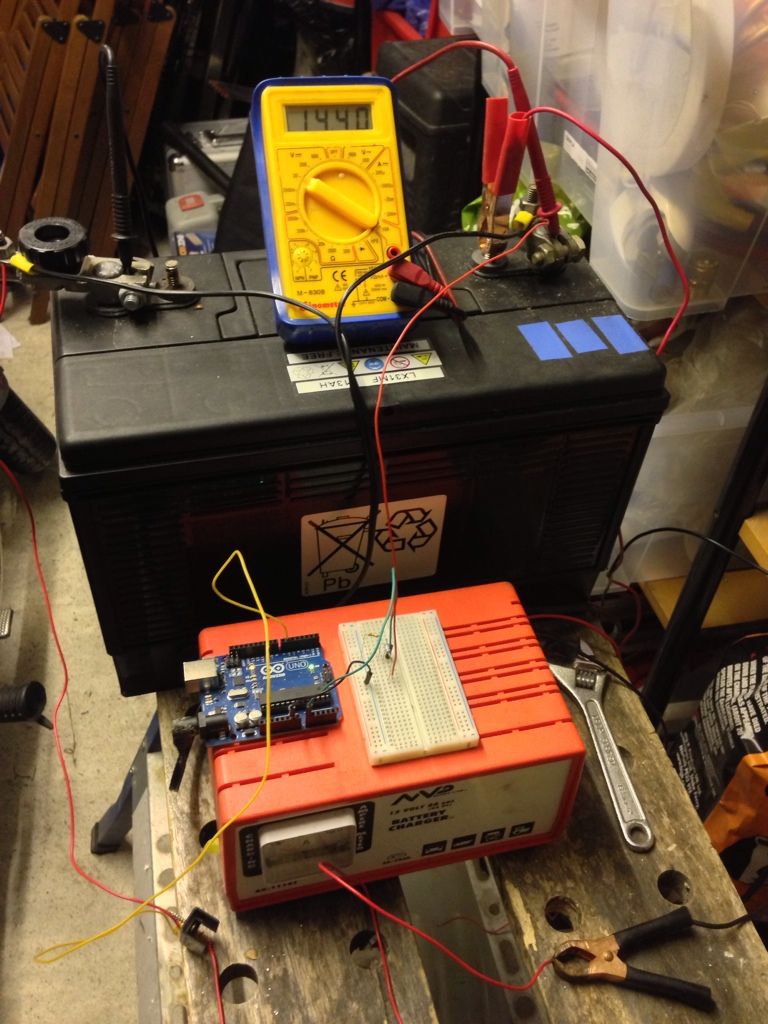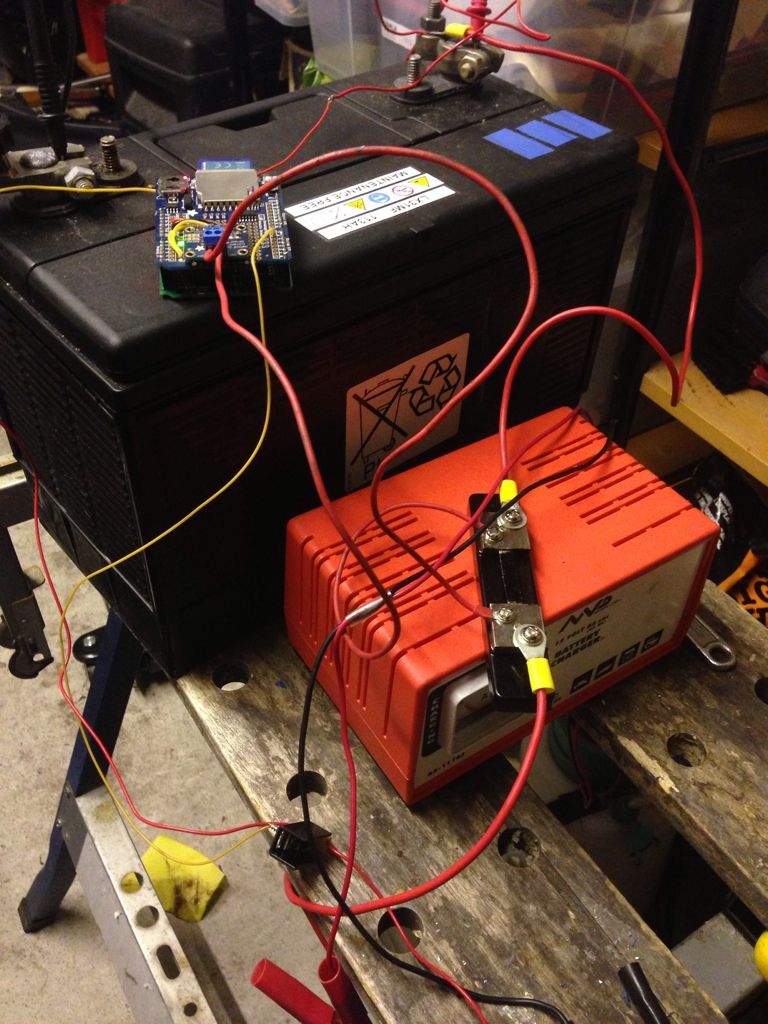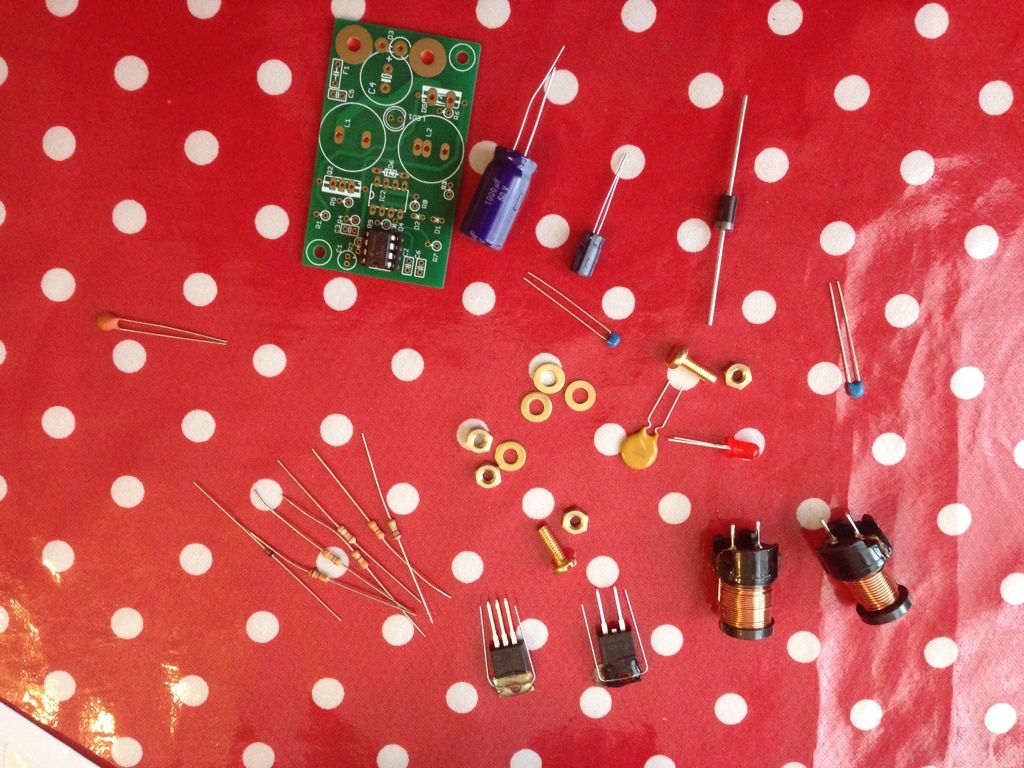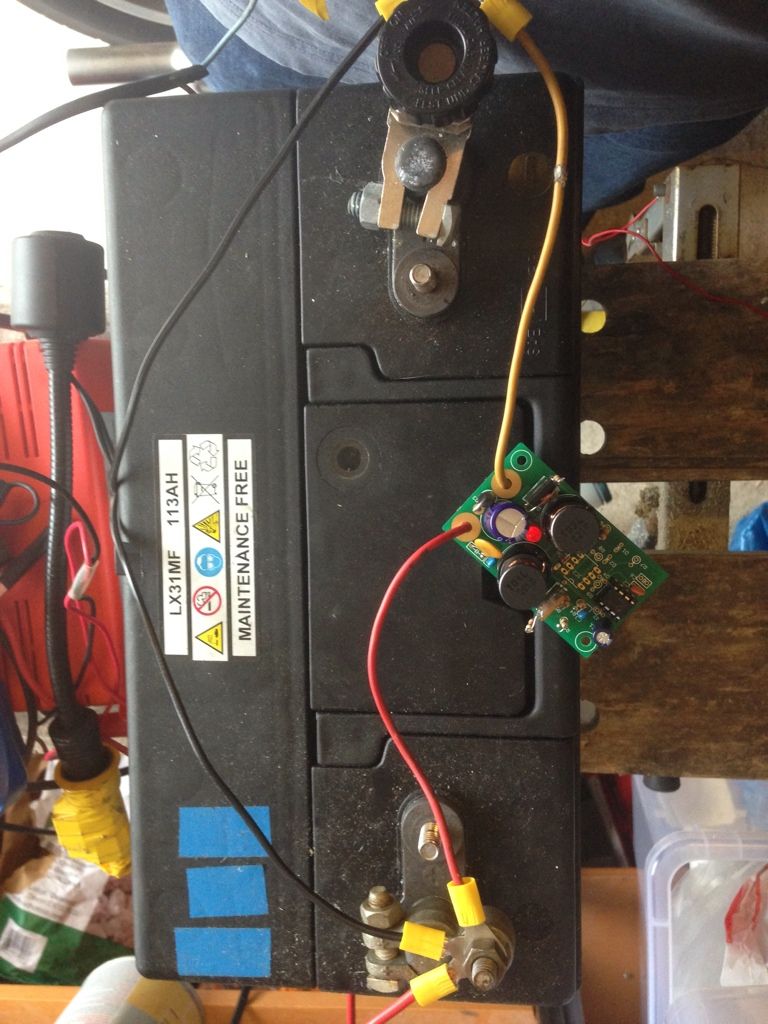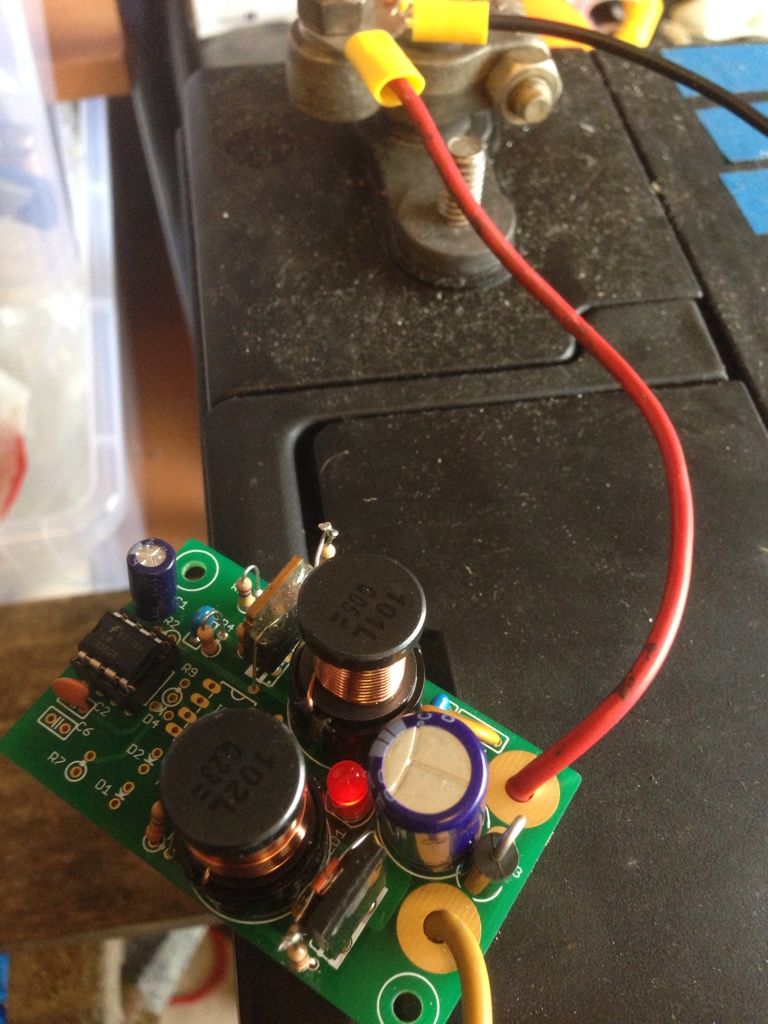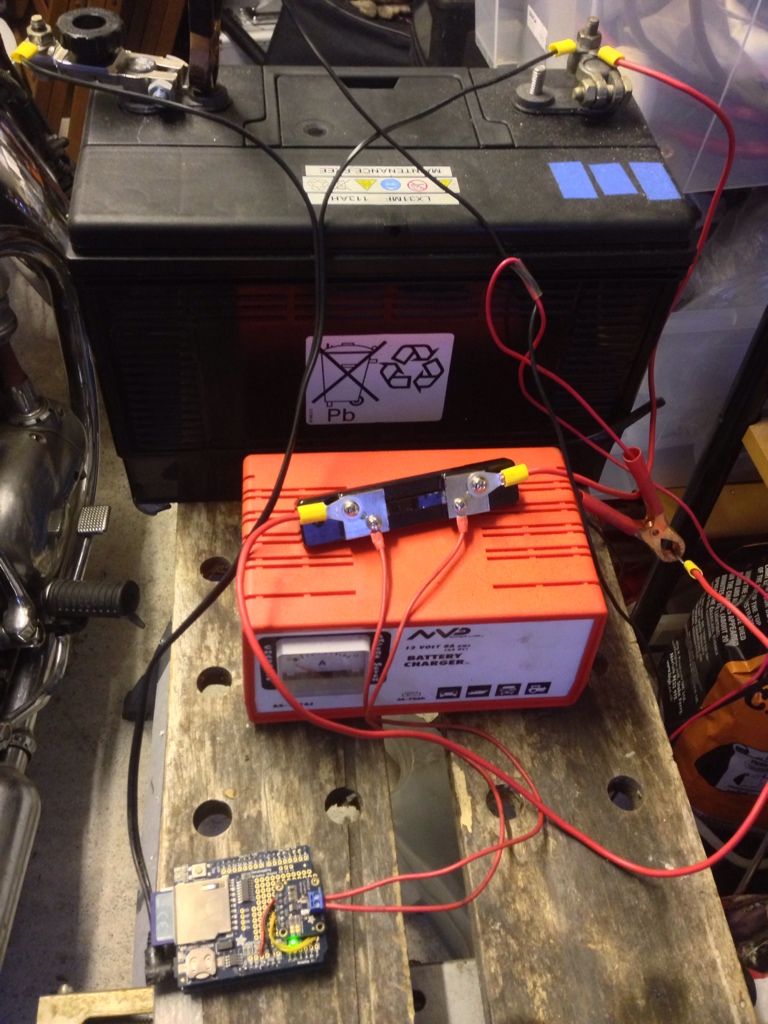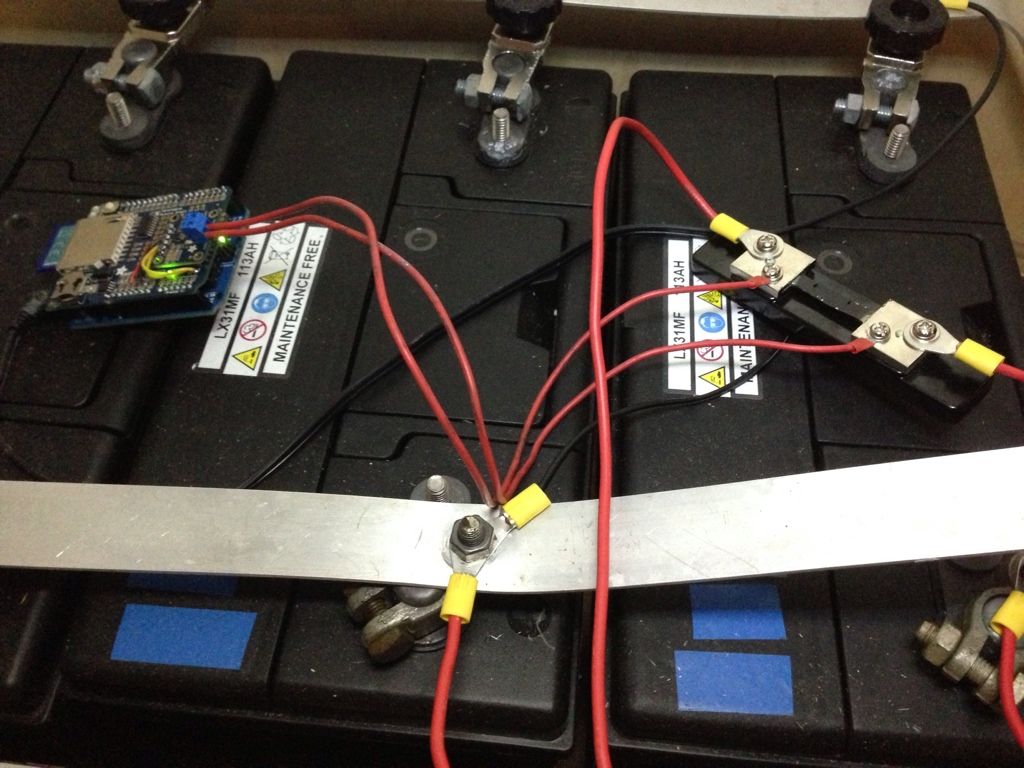Here is the graph of leaving the battery on charge overnight:
 |
| Voltage and Current on overnight charge |
The charger I have is some bargain basement one I picked up from an auto store. My intention at the time was to find the stupidist heaviest cheapest charger I could find. My old Halfords automatic charger had died and I needed a quick replacement. I didn't want to spend money on something all singing and dancing as the plan was this charger was just going to be for occasional bench charging, or to feed 12v power into my Sterling B2B and use its 'cleverness' to feed the batteries.
I put the battery on charge with the Arduino plugged into it monitoring the current and voltage, as per the bench charge photo in the last blog entry.
This is not a 3 (or 4, or 7) stage charger. It just puts current into the batteries. So unlike the B2B when it kicks in, it doesn't immediately raise the voltage up to 14.4v. As you can see it is putting in around between 1 and 4 amps to start with and seems to pulse the current as seen by the solid green band. Watching the current readings so by on the serial terminal it looked like it did a few seconds of 3-4A then dropped to 1A for a second then back up again. You can see the voltage slowly raises and the current reduces as the voltage increases. I left it going overnight expecting to have reached around 14.4v or so by the morning. Slightly alarmingly it had brought the voltage right the way up to 15.1v. This is considerably higher than you should take a lead acid battery as they start to gas, usual at around 14.4v... but the addition of Calcium in the battery can raise the gassing level. My batteries are 'maintenance free' which is actually a stupid term which just means 'once the electrolyte has boiled off, you can't top it up'. But some batteries do do some cleverness to catch the gas and try and re-condense it back into the battery. My batteries have no obvious vents in them, so I can't see anywhere for the gas to escape. They didn't seem warm or bulging or anything so I hope not damaged them.
In effect what I have done is what is termed an 'equalisation charge' which is when you the battery up to a higher than normal voltage to try and get all 6 cells in the battery to the same level. This invariably causes some gassing in the battery and does overall reduce its lifetime, but on the other hand lessens (supposedly) the chance of one cell lagging behind the others and eventually dying prematurely rendering the battery useless (which actually happened to one of my previous batteries).
Many places say you shouldn't try and equalise a sealed battery as it causes gassing, which is bad. That makes sense. But I'm hoping doing this as a one-off has had a positive effect. I'm kind of working on the basis that if I can't revive these batteries and get their performance up to where they should be then I'm going to be needing to buy some new batteries anyway. So kill or cure.
When I checked the battery this morning and it was at 15.1v I could hear some sound from the battery, so I'm guessing it was gassing. If there was some sulphation on the plates, then hopefully this will have helped to remove some of it. time will tell.
I switched the charger off and left the battery to see what the voltage would return to. As you see in the graph, shortly after 8am, when the current is stopped the voltage dramatically drops to around 13.5v and then slowly drops of thereafter. At the end of the graph it is at 13.22v and you can see it is slowly falling still. There is no load on the battery other than the Arduino itself, which is pretty small, but hopefully enough to put enough load on the battery so that we get meaningful voltage readings.
I might try and find aspare headlight bulb to wire up to the battery to see what that does to the voltage reading. Fingers crossed, if I've managed to revive this battery then we should see a much smaller voltage drop when the load is applied (after taking into account the surface change still on there holding it above 12.8v).
